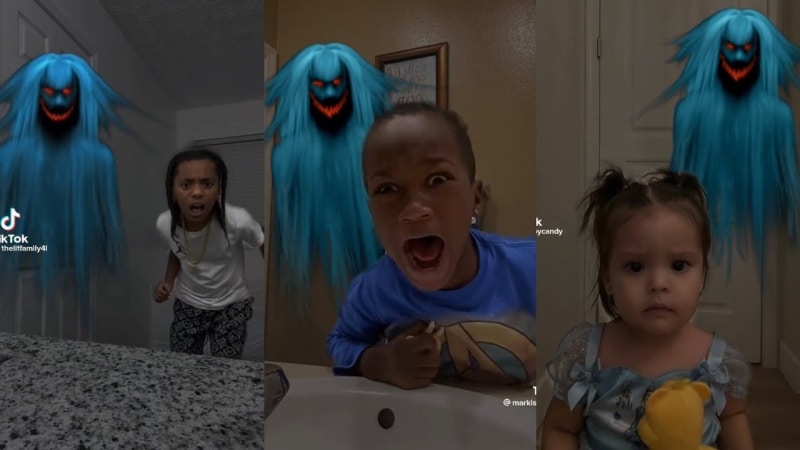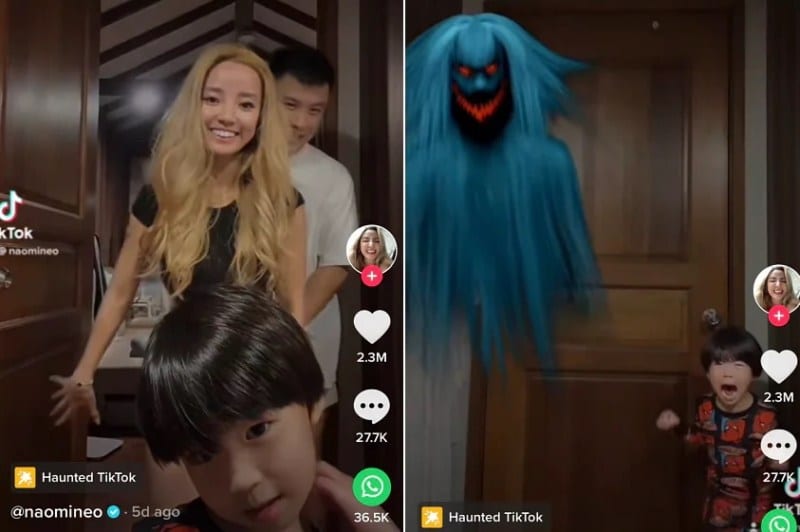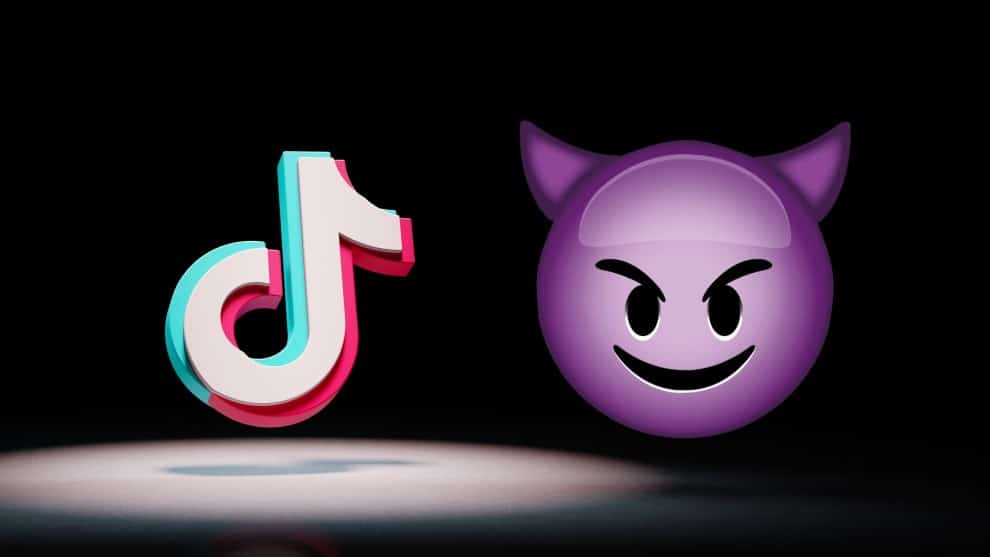Faced with the bad buzz, TikTok removes the filter that traumatizes children
TikTok has become in a few years one of the most important social networks on the planet, if not even the most powerful! This playground developed by ByteDance has more than a billion monthly users and has a trump card up its sleeve: the filters ! So some are pretty fun, turning you into a cartoon character, Japanese anime, adding a retro glow to your videos, or adding dog ears and nose to your face. Effects that do no harm and can make you laugh for 5 minutes. And then some make polemics about their stupid use, like the latest that makes a ghost appear.
Brain Disappearance
So we’re certainly not here to say that the filter is stupid in itself (it’s an “effect” and not a filter in the proper sense). Its principle is even rather ingenious. You film yourself in a room and, when you leave by closing the door, a kind of blue ghost appears on the screen coupled with demonic giggles. Enough to startle your friends and any member of your family. Except that some subscribers use it to scare their young children and create buzz on TikTok by posting videos of their frightened reactions.

Unsurprisingly, the toddlers burst into tears and find themselves seized with a panic which, it must be believed, must make their parents laugh. However, it is obvious that this way of doing things is detrimental to the mental health of the youngest and can have serious repercussions on their development.
Torture for the buzz?
So, is it serious, doctor? ” Yes ! indeed responds to the Huffpost child psychologist Catherine Verdier.
It is cruelty. We laugh at children, not with them. The Observatory of Ordinary Educational Violence classifies such teasing as violence.
It must be said that on the videos found on TikTok using this filter, the young people are petrified and weep bitterly as they try to find their laughing parents in the next room. The psychologist is not tender with the latter whom she judges severely.
I am appalled by the emotional and intellectual misery of some parents.
As for children, the effects of this kind of video can be devastating on their psychological development. Catherine Verdier sheds light precisely on the latter.
They (the children) are most likely sufficiently terrified that the brain is in a state of amazement. They are unable to have the right reaction and the right thought. They can be completely traumatized. We can find post-traumatic stress with difficulty sleeping, eating, nightmares… The child can drag it out for a long time.
Worse, if he lives this kind of experience around 6/7 years old, he may want in spite of himself turn fear against others and behave aggressively. Worse, he can also internalize it and keep his emotions to himself, which can lead to symptoms of depression. Some may also turn against their parents since, in some videos, we can clearly see that they are forced by their parents to stay in the room “with the ghost” when they would like to leave it.

Under the excuse of social networks, parents allow themselves anything and everything. Faced with the bad buzz of the “phantom” filter (“Haunted” of its real name), TikTok has since removed it from its app. Unfortunately, for some children, the damage is already done and no new filter can change this state of affairs. As for the theory that says that the Chinese created TikTok to ruin the childhood of young Westerners, we will even end up believing it. It must be said that the version on their territory, called Douyin, is much better in terms of content.
A Trojan Horse 4.0 that works like thunder!


